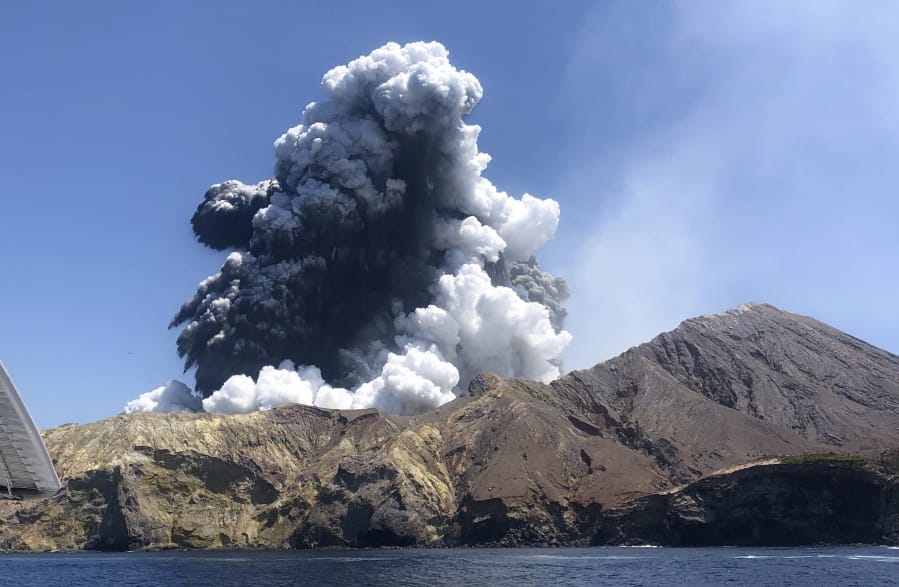WHAKATANE, New Zealand — The eruption was so silent that Lillani Hopkins didn’t hear it over the hum of the boat’s engines. She didn’t turn around until her dad whacked her.
Then she saw it. Huge clouds of ash and steam shooting into the sky. She was so excited, she grabbed her phone out of her dad’s bag and hit record. But then the plume stopped going up and started rolling out over the cliffs — and her awe turned to fear.
Just under the surface of the crater, pressure had been building for months. Now the super-heated water, about 150 degrees Celsius, or 300 Fahrenheit, burst out in a powerful spray. The blast also contained ash, rocks and a few boulders the size of exercise balls, but it was likely the scalding water that was most deadly.
There were 47 tourists on New Zealand’s White Island at the time of Monday’s eruption: 24 from Australia, nine from the U.S., five New Zealanders and others from Germany, Britain, China and Malaysia. Many had taken a day trip from the Royal Caribbean cruise ship Ovation of the Seas. Authorities believe 16 people were killed, including several who died later in hospitals. Those who survived the blast had terrible burns and some ran into the sea screaming — a screaming that would not stop.
Lillani, a 22-year-old student who has studied volcanoes, had taken her dad, Geoff, a pastor, to the island for a 50th birthday present on Monday. Their group’s two guides told them to wear hard hats. They gave them gas masks, which the guides said they could wear if they had trouble with their breathing.
The guides told them the sulfur dioxide and other gases on the island turn acidic when mixed with their saliva, and gave them candies to suck. Lillani has asthma and found she needed to wear the mask near the crater. Her dad noticed his throat getting sore.
As they walked around the island, Lillani was full of enthusiasm, and questions. She asked her guide: What do we do if it erupts? Strap on your mask and take shelter, he told her. Run to the shipping container that’s over there for emergencies, it’s full of supplies.
Aside from their two guides, Lillani and her dad were the only New Zealanders in their tour group. The others were from Asia, America, Europe. Some didn’t speak much English. Lillani loved every moment on the island, which is also known by the Maori name Whakaari.
After 90 minutes, the group got back on the boat, and was just a couple of football fields away from the shore when the volcano erupted. The crew told them to get below deck. Then they asked for people with medical training, and Lillani and her dad, who had both trained in first aid, joined two doctors on deck. A dinghy ferried the injured aboard, 23 in all.
Lillani had never seen anything like it. Welts and burns that covered every inch of exposed skin. People’s faces coated in gray paste, their eyes covered so they couldn’t see, their tongues thickened so they couldn’t talk. Some of them still screaming.
Passengers passed Lillani bottles of water. She rinsed out mouths, cleaned eyes and poured as much water on the burns as she could. The boat appeared to be filled with discarded gray rubber gloves. But they weren’t gloves, they were husks of skin that had peeled away from people’s bodies. Many were burned even under their clothes, and Lillani needed to cut them away.
As she poured water on some people’s burns, it only seemed to make them worse. So other passengers began handing her their clothes to make cold compresses, some of them stripping down to their bras and underpants.
When they finally got back to shore, Lillani says all 23 of those she helped were still breathing. But she hasn’t had any contact with them since and doesn’t know if they all survived.



